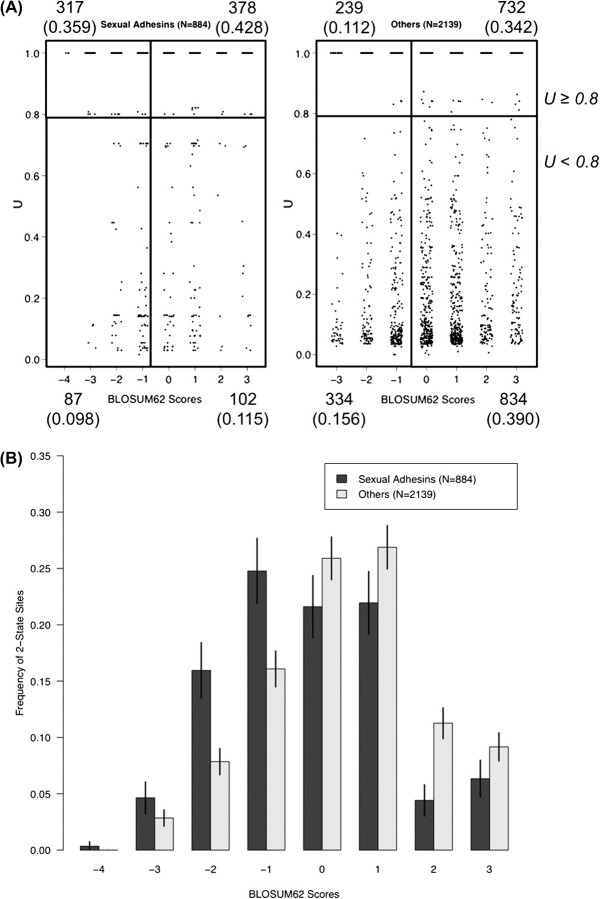FIG. 5.
Evolutionary variability and functional characterization of amino acid residues in sexual adhesins. To improve statistical reliability, the analysis included only genes that have at least five unique sequences in either species. BLOSUM62 scores were obtained for all two-state variable sites. Plots were based on a total of 884 two-state sites in the 4 sexual-adhesin families (22% of aligned positions) and 2,139 two-state sites in 64 proteins in other groups (7.1% of aligned positions). Substitutions with negative BLOSUM scores were considered nonconservative and those with zero or positive BLOSUM scores conservative. (A) Categorization of amino acid substitutions based on U and BLOSUM62 matrix for sexual adhesins and other proteins. We used a cutoff value of U ≥ 0.8 to delineate substitutions fixed either between the two yeast species or between the two subspecies of S. paradoxus. From top left clockwise, the numbers corresponding to each quadrant show counts and fraction (in parenthesis) of sites belonging to each of the four categories: fixed nonconservative substitutions, fixed conservative substitutions, conservative polymorphisms, and nonconservative polymorphisms. (B) Histogram of the distribution of amino acid changes, as measured by BLOSUM62 scores, in sexual adhesins and other proteins. Error bars show two standard deviations above and below the mean based on the binomial sampling variance.

